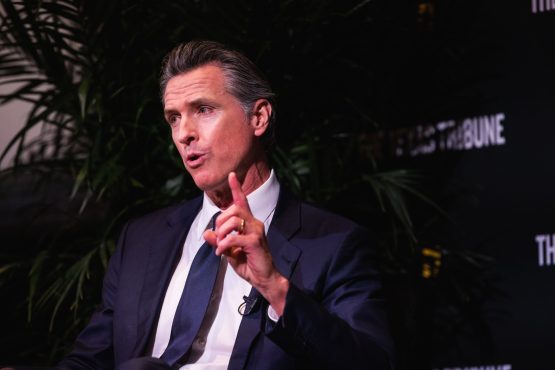Silicon Valley Bank customers have spent three tense days wondering if millions of dollars they entrusted to the now-failed bank were lost. They got their answer Sunday night: All their funds — even amounts not insured by the FDIC — will be available.
“Depositors will have access to all of their money starting Monday, March 13,” the Treasury Department, Federal Reserve and Federal Deposit Insurance Corp. said in a joint statement. “No losses associated with the resolution of Silicon Valley Bank will be borne by the taxpayer.”
The announcement capped a frantic weekend that started with news on Friday that regulators had seized the Santa Clara, California-based company and put it into receivership, marking the biggest failure of a US bank since 2008. The collapse came as SVB’s long-established customer base of tech startups yanked deposits and the bank was forced to abandon efforts to raise fresh capital through an equity offering.
Founders Fund, the venture capital fund co-founded by Peter Thiel, had been advising companies to pull money from SVB amid concerns about its financial stability last week. The bank’s customers moved to pull $42 billion in a single day — one of the biggest bank runs in more than a decade that left the company teetering.
With Friday’s Fed takeover, the tech startups that didn’t move their money out fast enough raised alarms that they would be unable to make payroll, and panic was building in Silicon Valley.
Searching for buyers
The FDIC first tried to arrange a sale of the bank, and requested bids from potential buyers. But regulators realized the timetable was too tight: Any acquirer would be hard-pressed to look through SVB’s books and be prepared to open Monday morning, given how quickly events unfolded in recent days, according to a senior Treasury official.
The goal was to get information out to depositors before Monday morning, and avoid spillover effects that risked sparking a run on solvent banks, the official said. While the sale process might still be pursued, in the meantime, federal regulators invoked a so-called systemic-risk exception allowing the FDIC to insure SVB’s uninsured deposits.
The emergency lending facility is a Depression-era statute in the Federal Reserve Act that allows the central bank to make loans directly. The Fed is required to establish that borrowers were unable to obtain liquidity elsewhere. Using the emergency authority requires a vote by the Fed’s board and approval from the Treasury secretary.
California Governor Gavin Newsom
SVB shareholders and certain unsecured debtholders won’t be protected under the agreement, according to the statement.
Federal officials’ actions “have calmed nerves, and had profoundly positive impacts on California — on our small businesses that can now make payroll, workers who will get their paychecks, on affordable housing projects that can continue construction, and on nonprofits that can keep their doors open tomorrow.” California Governor Gavin Newsom said in a statement.
The solution didn’t sit well with everyone, including US Senator Tim Scott, the South Carolina Republican, who sees it promoting moral hazard in banking.
“Building a culture of government intervention does nothing to stop future institutions from relying on the government to swoop in after taking excessive risks,” Scott said, adding there needs to be accountability from the banks and regulators. “We deserve to know what exactly happened and why.”
SVB’s significant investment portfolio and high share of uninsured depositors is an unusual combination and not how many regional banks operate, according to a senior Treasury official. Regulators will revisit whether the right safeguards are in place, but right now they are focused on addressing the current situation, the official said.
Amid the drama, the managers of SVB’s investment-banking arm have been exploring ways to buy the firm back from its parent. The head of SVB Securities, Jeff Leerink, and his team are seeking help to finance a potential management buyout of the business, according to people familiar with the matter.
And the FDIC is still considering options for selling all or parts of SVB, according to people familiar with the matter. The regulator may open up another round of bids, said the people, who asked not to be identified discussing internal deliberations.
An FDIC representative declined to comment.
© 2023 Bloomberg

